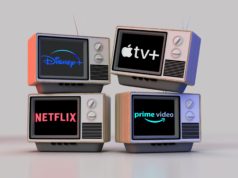 CES 2012 is over, and the exhibits and the on-premise networkers and the tired feet have gone home. It was a great show, as they all seem to be: both tiring and exhilarating. Now it is time for the post-mortems, facing the reality of which products/services will gain traction and which will not, and the beginning of the cycle once again for CES 2013. And once again, 3D is a dominant topic of these discussions.
CES 2012 is over, and the exhibits and the on-premise networkers and the tired feet have gone home. It was a great show, as they all seem to be: both tiring and exhilarating. Now it is time for the post-mortems, facing the reality of which products/services will gain traction and which will not, and the beginning of the cycle once again for CES 2013. And once again, 3D is a dominant topic of these discussions.
3D and related technologies, from image creation to display devices of all kinds, were very much present, including the introduction of new high end imagery in 8K, screens from OLED TVs to smart phones and tablets, and systems for delivery and distribution. The most significant difference this year, however, is that 3D TV just wasn’t as overhyped and in your face (pardon the pun) as it was in prior years.
3D TV faced the same frenzy that 3D theatrical exhibition faced a few years ago, the same frenzy that is prevalent in a lot of new technologies. Gartner calls this the Peak of Inflated Expectations. It is often followed by the Trough of Disillusionment.
It was in this context that the Spotlight on 3D Content panel convened on Day 1 of CES. I had the honor to moderate a discussion among industry leaders Bryan Burns – vice president, Strategic Business Planning & Development, ESPN; Tom Cosgrove – president and CEO, 3Net; Vince Pace – co-chairman, Cameron Pace Group; and Robert Zitter – executive vice president & chief technology officer, Home Box Office. The panel was recorded and is ready for streaming here.
The primary topics the panel addressed are the very same topics that need to be considered by the many industry organizations from throughout the 3D TV ecosystem that were in attendance and whose executives are making the decisions that will chart the future course of 3D.
By general consensus, getting widespread adoption of 3D has been a chicken-and-egg challenge. Many content producers have not taken the 3D leap, waiting for a sufficient installed base of 3D display devices. Consumers have held back in buying 3D-enabled TVs as they wait for the content base to increase sufficiently.
The good news is that not everyone is waiting for someone else to grab the initiative. ESPN , for example, has been prolific in building 3D skills across the board. It has now produced nearly 200 events, including the BCS Game that occurred on the eve of CES and a myriad of other events including college football and basketball. The network also announced at CES that it will be televising the Winter X Games totally in 3D.
Since most of the major studios have produced 3D movies, HBO has made them available on demand where they have the rights. 3Net, a joint venture of Sony, IMAX and Discovery, is also producing original content which can be seen via several distribution systems.
The even better news is that over the next year, many, if not most, new high-definition TVs will be 3D-enabled. This will mean that consumers won’t have to make a specific decision to buy or not to buy a 3D TV. The next TV we each buy will not only be 3D-enabled, but it also will have internet connectivity to gain access to a wide range of 2D and 3D content along with numerous apps that are changing the way we receive and consume our entertainment.
With the installed base of 3D TVs and other displays continuing to grow, the circle of intertia will be broken and more producers will be inclined to produce 3D content.
That in turn will lead to cost savings, a factor fundamental to the entertainment ecosystem and one that is particularly important in the world of 3D TV. As studios, networks and independents produced 3D over the past couple of years, the flattening of the learning curve has enabled the cost of producing 3D to decrease. Several production service providers are already chanting the mantra of “3D for the price of 2D.”
During the course of the panel, Vince Pace described the Shadow D process initiated by his company Cameron Pace Group, whereby the same camera crews used for the telecast operate 3D cameras and the left eye image is used for the still-prevalent 2D TVs.
While not every TV show or every movie will be done in 3D, and that may not happen for many years – if at all – there is a growing library of content being produced for a waiting audience. Cable and satellite carriers are now making 3D available to more and more households. There will come a time when a major event attracts the consumer’s attention and a greater number of viewers tune into the 3D version than the 2D one.
Sports and TV drove the growth of TV in its early years and drove it again when color was introduced. It happened in the evolution from standard definition to high definition, and it will occur again for 3D. Stay tuned.
__________________________________________
Marty Shindler is CEO of The Shindler Perspective, a management consulting practice that has worked at many, many points on the entertainment and entertainment technology value chain and the many businesses that intersect with those points. He may be reached at Marty@iShindler.com.







